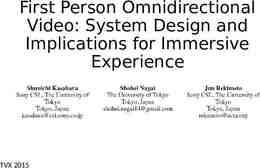Learning Aim B: Examine the ethical issues when Providing care
8 Slides828.69 KB
Learning Aim B: Examine the ethical issues when Providing care and support to meet the individual needs. B1 & B2
B1: Ethical Issues and approaches B2: Legislation and Guidance on Conflicts of interest, balancing resources and minimising risk. Ethical Theories Managing Conflict with Service Users Managing Conflict of interests. Balancing Services and resources. Minimising risks but promoting individual choice and independence. Sharing information and managing confidentiality. Organisations, legislation and guidance that influence or advise on ethical issues. All legislation and guidance must be current and applicable to England. Organisations, National Health Service (NHS), Department of Health (DH), National Institute for Care Excellence (Nice), Health and Safety Executive (HSE). Legislation, e.g. Mental Health Act 2007, Mental Capacity Act 2005, Human Rights Act 1998, National Health Services Act 2006 Section 140, Equality Act 2010, Care Act 2014. Guidance, e.g.: Five step Framework The DH Decision Support Tool NICE and NHS Guidance on Care Pathways and Care Plans Managing Conflicts of Interest: Guidance for Clinical Commissioning Groups (2013) (NHS) HSE Guidance on Risk Assessments.
Ethical Theories Consequentialism Deontology Principlism Virtue Ethics Explain the theories and how they apply to Health and social care environments
Managing conflict with service users, carers/families, colleagues. What are the do’s and don’ts of conflict? Use the guidance in the Managing Conflict of Interest: Guidance for Clinical Commissioning Groups (2013) (NHS) How do you manage conflict differently with your colleagues and family than you would with a service user?
Conflicts of interest. If you are caught in a conflict of interest you must find an ethical solution. Discuss; Mental Health Act 2007 OR the Mental Health Capacity Act 2005 AND Using the a Five Step Framework to Make an Ethical Decision. Then evaluate with the Human Rights Act 1998 OR the Equality Act 2010. Give examples of when this may occur in a health and social work setting.
Balancing services and resources. Explain what resources have been stretched recently (within the last 5-10 years) over several health and social care settings and how this has impacted on your service. Discuss National Health Service Act 2006 s140, OR Care Act 2014, AND Nice and NHS Guidance on Care Pathways and Care Plans (Safe staffing guidelines), OR HSE guidance on risk assessments. How does your service ensure that the service users still benefit from their service?
Minimising risk when promoting individual choice. Explain why vulnerable people should have a choice with their care. Discuss religion, personal choice and the following Government policies. Explain and assess why there is a conflict sometimes when the choices some vulnerable people make are different to the ones the care professionals would make. Use the DH Decision Support Tool, AND The Mental Health Act 2007 OR and the Mental Capacity Act 2005. Then the HSE Guidance on Risk Assessment with the Equality Act 2000 , NICE and NHS Guidelines on Care Pathways and Care Plans (positively equal) to balance your Evaluation.
Managing Confidentiality Discuss the duty of care your workers have under the Data Protection Act 1998 to protect service users information. However, you must also evaluate the need that you may have to safeguard some service users under the Care Act 2014 OR the Mental Health Act 2007.













